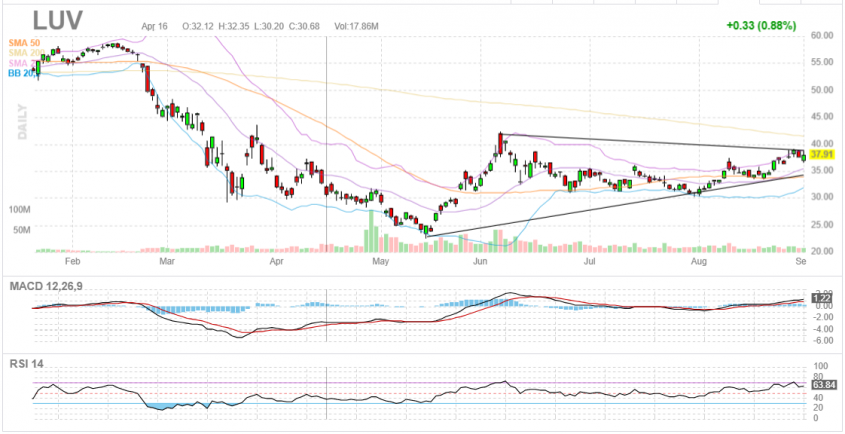There have been plenty of news articles speculating whether U.S. airlines will manage through the latest downturn in travel demand. In early August, all the major U.S. air carriers announced plans to furlough pilots, flight attendants, and layoff ground personnel.
The CARES Act funding was going to run out as of Oct 1, therefore most airlines had to announce 90 days in advance intentions to furlough, as per union contracts.
However, as recently as last week, Southwest (LUV), JetBlue (JBLU), and Spirit (SAVE) all announced that pilot furloughs and most layoffs won’t be necessary.
American (AAL) and Delta (DAL), meanwhile, will have far fewer furloughs needed thanks to the thousands of pilots that have taken voluntary separation or early retirement.
United is the lone major carrier that didn’t provide voluntary separation and will still be furloughing or laying off over 16,000 employees.
Airline stocks have been depressed since March but have started to come back as of late. With COVID exposure rates receding, demand beginning to rise there will be an increase in airline sector stocks.
These stocks are well below the February levels. This could be a good time to get in early and take advantage of the upswing. Southwest (LUV) JetBlue (JBLU) and Spirit (SAVE) are already positioned to increase demand by offering incentives.
Over the past few days, all three major U.S. full-service airlines — United Airlines, American Airlines, and Delta Air Lines — as well as budget operators Spirit Airlines, JetBlue, and Frontier Airlines have removed change fees for most domestic flights. This should create an increase in demand.
This could reduce income initially, but as demand returns expect these fees to be reinstated, boosting the bottom lines.
Because the stock price increase isn’t predictable you can protect your portfolio by selling puts several months out. By going out to Jan 15, 2021, you will be able to watch how the airlines do after the elections, Thanksgiving, Christmas, and the New Year’s holiday.
You will also have time decay (theta) that will reduce the premium price to give you leeway if there isn’t an increase in the underlying stock.
Favorable winds
Air carrier stock charts are showing a wedge pattern that suggests there will be a turn to the upside. A conservative position would be to sell LUV Jan 15 $37.5 puts for a 13% return on investment.

You could also sell AAL Jan 15 $16 puts for a 30% return or sell SAVE Jan 15 $25 puts for a 36% return. All of these puts are midrange of the potential increase but still have really good potential returns.
If these prices go beyond the strike prices, your contract expires out of the money and you retain the premium. If it expires in the money, then you can close your position with a high probability it being less than you sold it for keeping the excess premium.
Or you could let them expire in the money to have the stocks put to you and purchase the shares.
If you are willing to take on a little more risk, you can sell Jan 15 puts LUV $43, AAL $23, and SAVE $32.5. If the shares are put to you, your discount will be 26%, 43%, and 46% respectively and your cost basis for assigned shares would be as if you purchase the shares today.


